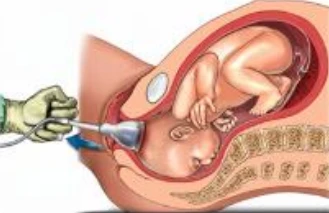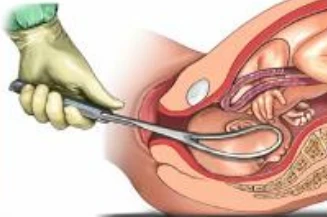Assisted vaginal birth
A vaginal birth relies on your body's natural ability to bring your baby into the world. Most babies are born without the help of instruments, but sometimes a doctor will recommend them.
When an assisted birth is recommended
Some people will need help with their births to guide the pēpi to move through the birth canal. A doctor will recommend an assisted birth if:
- your pēpi is not coming through the birth canal as expected
- there are concerns about the wellbeing of your pēpi and a quicker delivery is needed
- you cannot keep pushing
- you have had an epidural and do not have the sensation to keep pushing.
The midwife will call a doctor to decide if help may be needed. The doctor will need to do an internal examination to decide if it is safe to perform an assisted birth. There are 2 types of instruments that may be used — ventouse and forceps.
Ventouse
A ventouse is a metal or rubber cup that is placed on the head of your pēpi and creates a suction. This lets the doctor pull as you push to guide pēpi through the birth canal.

Forceps
Forceps are a pair of smooth, curved tongs which slide down the side of baby's head. The doctor uses these to pull as you push to guide pēpi through the birth canal.

During an assisted birth
If you consent to an assisted birth, you will be offered pain relief, and have a small tube (a catheter) put in. The catheter will empty your bladder and help prevent bladder injury.
The doctor will check your cervix to:
- make sure you are fully dilated
- check the position of your pēpi.
The doctor will explain which instrument will be used. Your midwife or the doctor will tell you when you should push, and when you should stop pushing.
The doctor may recommend an episiotomy. This is a cut in the tissue between the vagina and anus to prevent further injury.
Which instrument is used
The instrument used will depend on the clinical assessment by your doctor, which includes:
- the position of the head of your pēpi
- which instrument is most likely to lead to a successful and safe birth of your pēpi.
The decision around which instrument to use is made after the internal examination. Your doctor will only recommend an assisted birth if it is the safest thing for you and your pēpi.
If the assisted birth does not help
If an assisted birth does not help, a caesarean may be needed.
In some cases, the doctor might move you to an operating theatre before trying the forceps or ventouse. This means a caesarean can be done faster if it is necessary.
Risks and side effects of an assisted birth
Most assisted births do not have more problems compared to a normal vaginal birth. It is important to understand that an assisted birth is only considered if there are concerns about you or your pēpi.
There are many benefits to an assisted birth, rather than a caesarean, when you are fully dilated.
Caesarean delivery at full dilation increases the risk of:
- bleeding
- infection
- injury to other organs
- preterm birth in future pregnancies.
With an instrumental birth:
- you may have bruising around your vagina and perineum
- there is a chance of injury to your pelvic floor muscles, bladder or bowels
- pēpi may experience bruising on the scalp and face
- pēpi may experience a collection of blood under the skin (haematoma)
- there is a rare chance of a ventouse causing a significant bleed under the scalp (subgaleal haemorrhage)
- there is a very rare chance of forceps causing a nerve injury to the face — this does not affect the brain and will heal
- there is a higher chance of your pēpi experiencing shoulder dystocia, where the shoulders do not come out as intended
- your pēpi may be reluctant to suck and latch on the breast.
In extremely rare cases, your pēpi may have a:
- skull fracture
- bleed into the brain
- spinal cord injury
- brain haemorrhage.